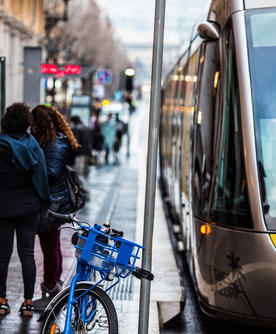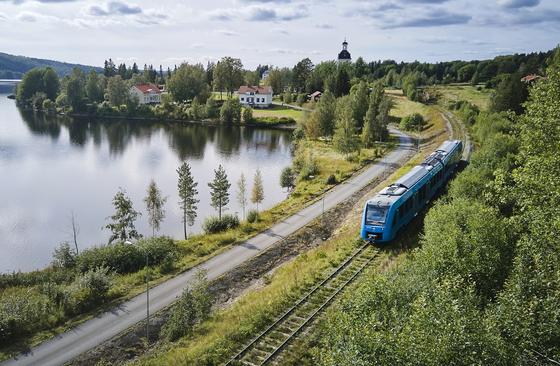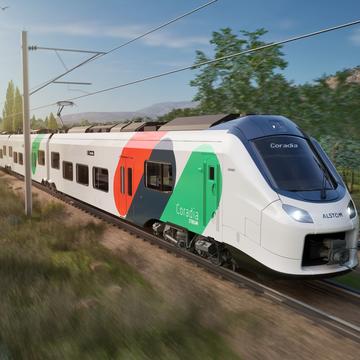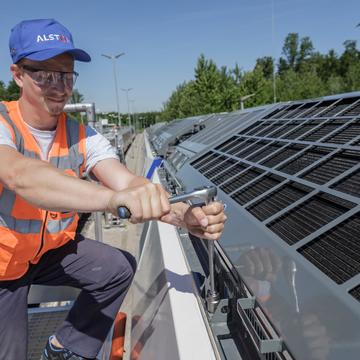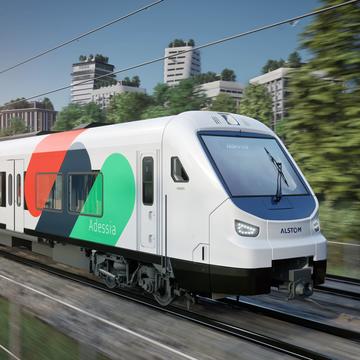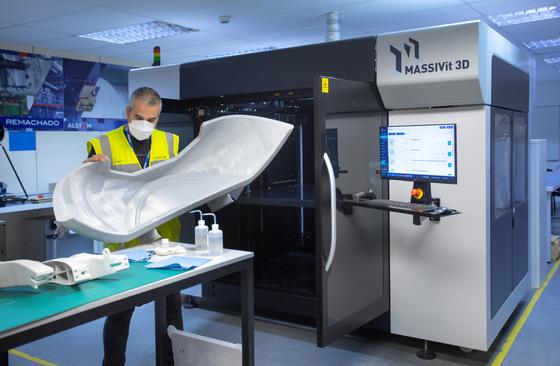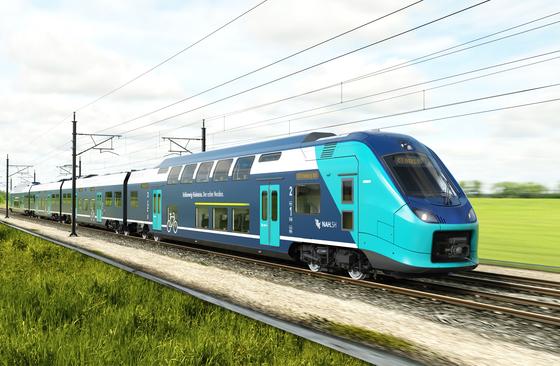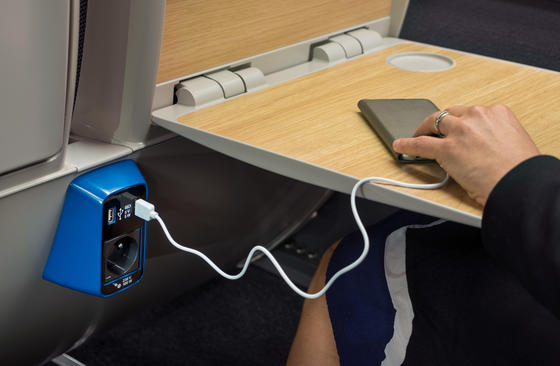
Moving to a low carbon future together
Reducing the impact of transport, one journey at a time
Alstom stands with you at the vanguard of the sustainable mobility revolution, not just advocating for change but actively creating the solutions needed to reduce the carbon footprint of transportation. We have made concrete commitments to bring you what you need to move more people and goods more sustainably.
-
65%of our newly developed solutions were eco-designed in 2023/24
-
22.5%of recycled content in newly developed rolling stock solutions
Taking a life cycle approach with eco-design, reducing the carbon footprint of the train
Our actions to reduce emissions span the entire lifecycle of our products. From the goods and services we purchase to manufacturing, operation, and decommissioning. Our eco-design philosophy ensures that every step is aligned with our sustainability goals. This comprehensive approach underscores our dedication to energy efficiency, the utilization of greener materials, noise and emissions reduction, and promoting circular economy principles. Last year, 65% of our newly developed solutions were eco-designed, ensuring a reduced environmental impact through their lifecycle, and by 2025 we will reach our 100% target. We also achieved 22.5% of recycled content in newly developed rolling stock solutions, lowering resources consumption and environmental footprint. The main contributors to recycled content are metals in the carbody, steel in bogies, aluminium in floors and polymers in insulation and floor coverings. We also ensure high recyclability rates at end-of-life by designing for easy disassembly and providing detailed end of life manuals.
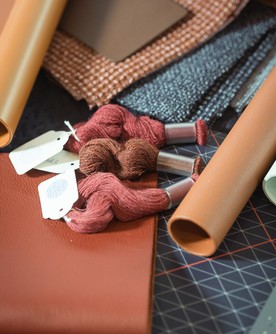
Eco-design: a pathway towards sustainable mobility
Read moreDriving for lower energy consumption
Alstom has a key focus on using innovation to reduce the energy consumption and therefore the emissions of its trains. Energy efficiency is one of the five key priorities of Alstom’s eco-design approach and we've pledged to reduce our trains' energy consumption by 25% by 2025, from a 2014 baseline, with a current achievement of a 23.4% reduction. This commitment is propelled by advancements in aerodynamics, traction efficiency, efficient auxiliaries, advanced driving systems and onboard energy recovery and storage. Taking an example, the latest generation of Alstom’s Coradia Stream regional train delivers an up to 35% reduction in energy consumption compared to previous generations, with large contributions to the reductions coming from improved traction efficiency and an advanced Eco driving solution. Alstom also offers infrastructure solutions that help reduce energy consumption and therefore emissions within urban networks. The HESOP Advanced Reversible Power Substation helps recover almost all braking energy, while also providing dynamic voltage regulation to optimize power use in traction mode. The full installation of HESOP within an urban network can reduce total traction energy consumption, and therefore carbon emissions, by up to 15%.
Bringing a full range of alternative solutions to diesel
The solutions that Alstom masters range from electrification, partial electrification, new battery trains, new H2 trains, hybrid, bi-mode catenary + hydrogen applications. No other manufacturer embraces such a full spectrum of low-emission rail technologies, allowing us to identify the best solutions based on your specific needs.
Alstom was the first rail player to have both H2 and battery trains in commercial operations. In addition, we are working on modernisation of diesel locomotives to convert them to hydrogen combustion.
Alstom’s Coradia iLint™ is the world’s first hydrogen fuel cell train in commercial operation, with its only direct emissions being water. It delivers a big reduction of carbon emissions compared to a comparable diesel train; even greater when powered with hydrogen from renewable sources. For networks with smaller unelectrified sections that need to be bridged, Alstom offers BEMU versions of trains including the Coradia Stream B™ regional train and the Adessia Stream B™ commuter train.
Enabling access to sustainable materials
StationOneTM, Alstom’s online marketplace for the rail industry, exemplifies our initiative to streamline access to sustainable and innovative parts and equipment. It is the platform where all the key players in the rail industry can collaborate towards more sustainable consumption.
StationOne has a dedicated Circular Economy offering including over twenty thousand repaired, refurbished parts, stock clearance and secondhand products. Alstom also encourages operators, maintainers, and OEMs to offer their circular economy parts and materials in StationOne.
For example, Railtech Welding Equipment was able to purchase a rail maintenance machine (yellow machine) at a very competitive price from Alstom Dubai. Giving visibility to used equipment that is still viable for further use, can not only bring benefits for both parties, but also reduces impacts on natural resources by extending product lifecycles.
3D printing, also known as additive manufacturing, is transforming industries around the world, and rail transportation is no exception. This cutting-edge technology offers a unique set of advantages that can make train maintenance faster and more efficient.
Alstom has several 3D printing hubs located around the world. Customers can now easily request, and purchase 3D printed parts via StationOne.
Additive manufacturing (3D printing) offers serval advantages that lead to a more sustainable environment by:
- Reducing the carbon footprint through local manufacturing
- Reduction of production excess and waste
- Tackling obsolescence and extending products’ lifespan
